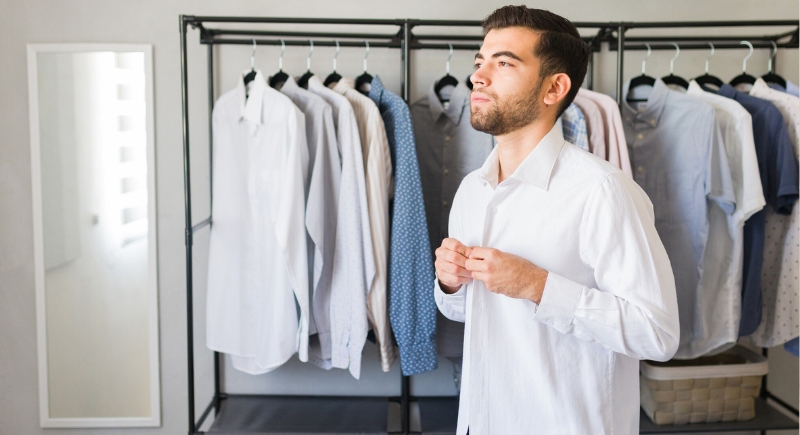Closet’s Full but Still Have ‘Nothing to Wear’? This Could Be Why
If you feel like you’ve got plenty of clothes, yet only a fraction of them ever see the daylight, you’re not alone. The reasons behind this pattern aren’t as simple as “not enough options” — and once you see what’s really going on, it changes how you think about getting dressed.
The Illusion of Choice

Image via Canva/Изображения пользователя Tatiana
Psychologists often talk about decision fatigue, the mental drain that comes from making too many choices in a short period. Your closet is a prime example. Even if it’s packed, staring at dozens of hangers can overwhelm your brain.
When faced with too many options, people tend to choose what feels easiest: the same few outfits they know will work. In other words, a closet stuffed with clothes feels like pressure.
Furthermore, not every piece of clothing you own feels like an option. Some items are outdated, uncomfortable, or bought impulsively, so they linger in the background without ever being in play.
The pile looks big, but the functional selection is much smaller. That’s why the same black jeans or white T-shirt are always chosen. They’re the safest bets in a noisy lineup.
Why New Clothes Don’t Solve the Problem
The most common reaction to this cycle is to buy more. A survey by Trunk Club, which cited ClosetMaid, found that 61 percent of women struggle to find anything to wear even with a full closet, and about a quarter admit to buying new clothes monthly to fill that gap.
But more clothes rarely fix the issue. Instead, they add to the chaos and increase the mental clutter. The real challenge is dealing with a lack of clarity.
Shopping fills a short-term void because it feels like progress. You bring home a new dress or jacket, wear it once or twice, and then it joins the crowd of barely-worn items. Without a clear sense of personal style or a wardrobe that works together, each new piece becomes another reminder that “more” isn’t the solution.
The Core Of The Closet Rut

Image via iStockphoto/Antonio_Diaz
At the heart of this problem is a mismatch between what you own and how you live. Many closets are filled with pieces that don’t match current lifestyles or identities.
Someone working remotely most days might still be holding onto old office wear. A parent running errands may have plenty of night-out looks but very little that feels practical for day-to-day life. That mismatch creates the feeling of having “nothing to wear” even when the hangers are full.
Another factor is habit. Once an outfit feels safe, it becomes the go-to. Repeating outfits reduces stress and saves time, which is why the cycle is so easy to fall back into. Over time, though, the habit makes the rest of the wardrobe feel even less relevant, which reinforces the same slight rotation.
Building A Closet That Works
Breaking the cycle doesn’t mean throwing everything out, just as it does not mean buying an entirely new wardrobe. You need to make what you own more wearable.
Experts suggest starting with a closet edit. Pull out pieces that don’t fit, don’t suit your current lifestyle, or don’t feel good when you put them on. What’s left becomes a clearer picture of what actually works for you.
Another strategy is to create outfits that mix and match. Capsule wardrobe concepts, where a smaller number of versatile pieces are styled differently, help reduce choice overload while keeping things fresh. Pairing this with a better understanding of your own style and colors makes every decision easier.
Why It Feels So Familiar

Image via Canva/macniak
This cycle is so universal because it ties into both psychology and culture. The average American household buys about 68 new garments a year, but research, like one in 2018 by relocation company Movinga, shows most people wear only a fraction of what they own.
The hidden reason behind the “full but nothing to wear” problem is the gap between having clothes and having clothes that actually fit your life, your comfort, and your style. Once you bridge that gap, the closet feels lighter, the decisions feel easier, and those morning sighs disappear.